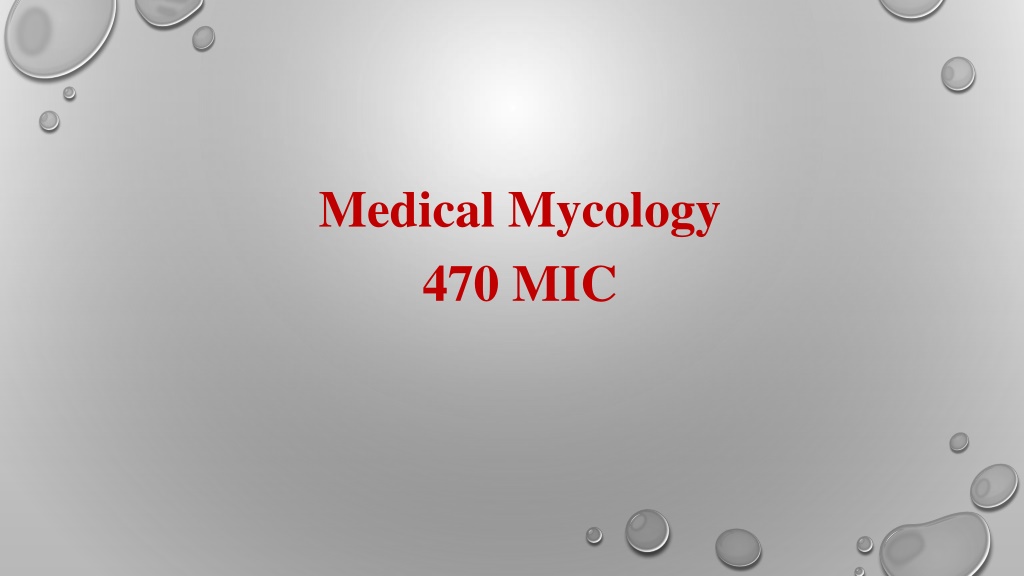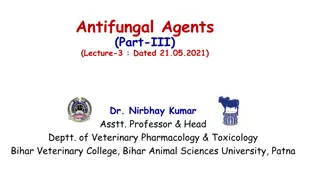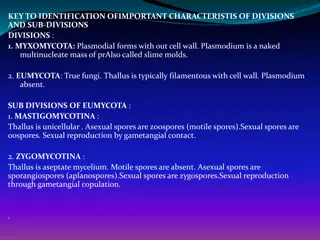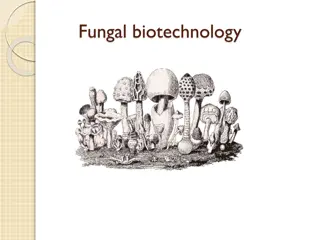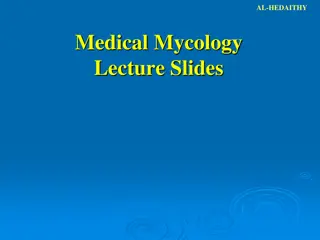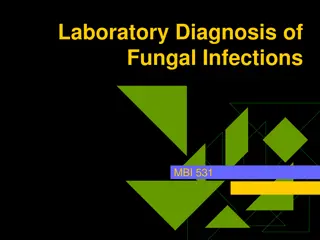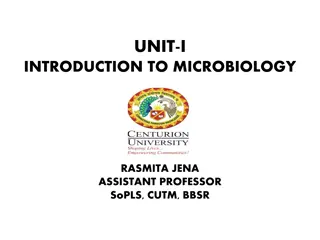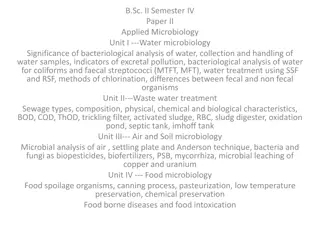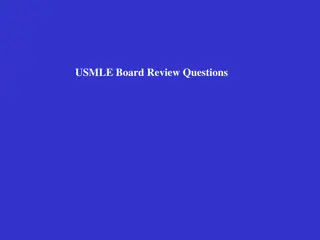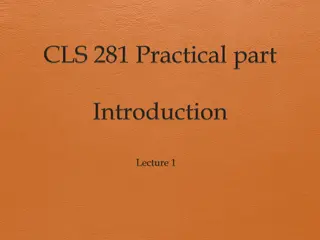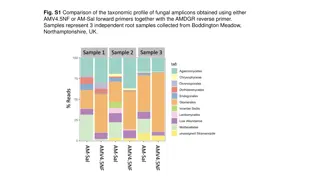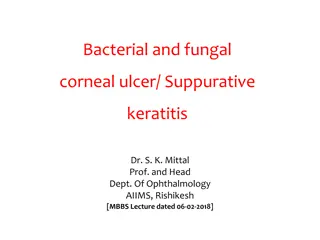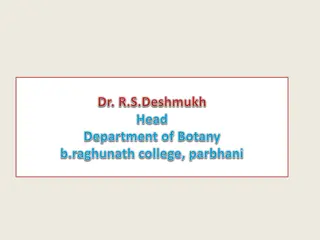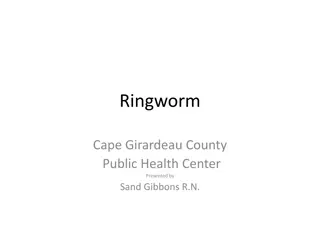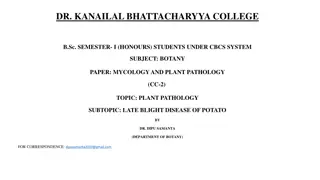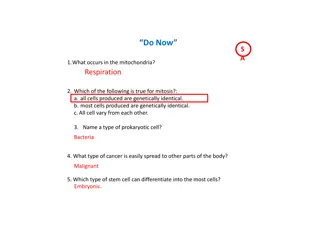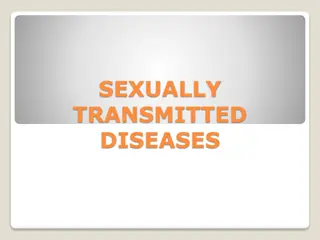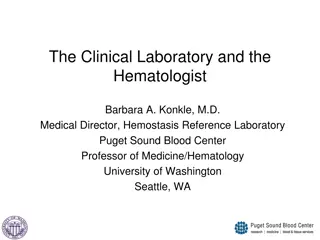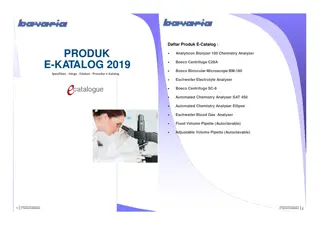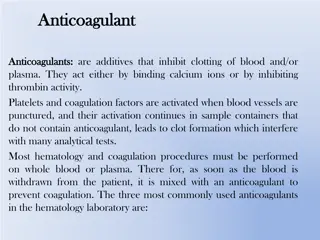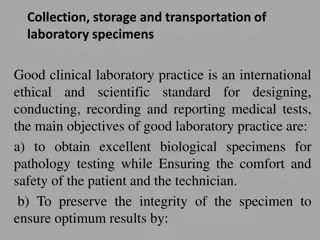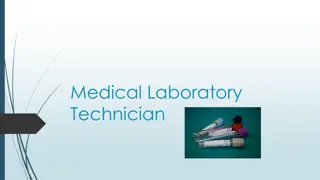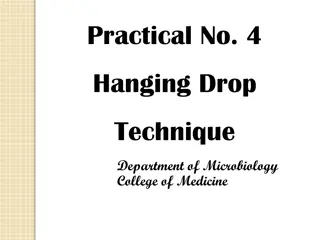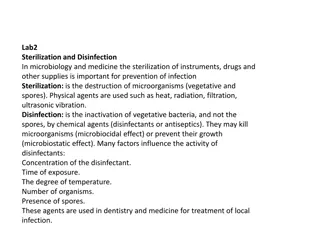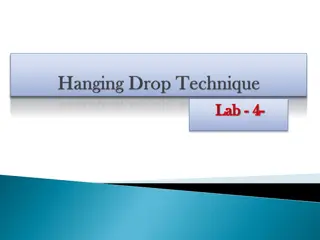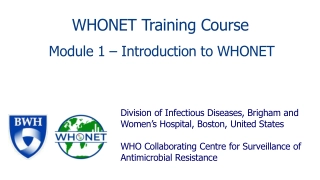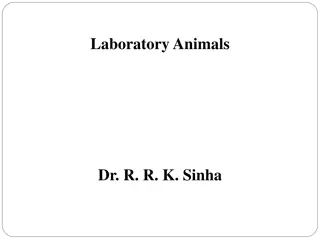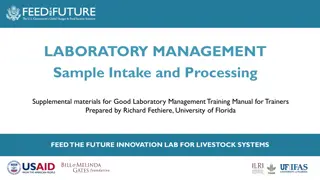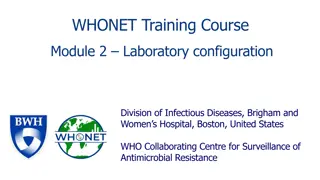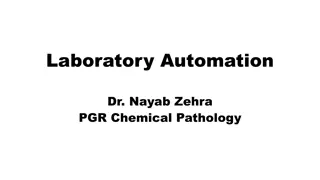Fungal Microbiology Laboratory Procedures
This content provides detailed guidelines on fungal culture purification, subculturing process, preparation of microscopic slides for fungal micromorphology assessment, and isolation of human samples for diagnosing fungal infections. The procedures include steps for identifying characteristics of infectious agents, maintaining viability, and making genus/species identification based on microscopic criteria.
- Fungal Microbiology
- Laboratory Procedures
- Purification Process
- Microscopic Analysis
- Isolation Techniques
Download Presentation

Please find below an Image/Link to download the presentation.
The content on the website is provided AS IS for your information and personal use only. It may not be sold, licensed, or shared on other websites without obtaining consent from the author. Download presentation by click this link. If you encounter any issues during the download, it is possible that the publisher has removed the file from their server.
E N D
Presentation Transcript
Medical Mycology 470 MIC
Fungus culture Purification Disk method Label your plate ( as you can t invert it post the purification process) Use sterilized glass Pasteur pipettes to cut out a disk from the margin of the fungal colony Use sterile forceps to invert the disk at the center of new plate (growth side should face the media) ** to make sure the fungus has access to all the nutrition required for an ideal growth Incubate as required
What is the purpose of the purification process (sometimes known as subculturing process) A)-Characteristics (identification) of an infectious agent 1. Colony morphology (shape, margin, color) ** It has limited value in identification of fungal growth because most fungus show different morphological features on different media. 2. Microscopic observation - using common staining reagent : Lactophenol cotton blue and use 40X objective to describe (septate /aseptate (non-septate hyphae), conidia shape B)-To maintain viability.
(2) How to prepare a Scotch tape slide for fungal micromorphology assessment - YouTube
The following microscopic criteria are used to make a genus/species identification of the fungal isolate 1. Determine the structure of the hyphae. Are they : Septate or aseptate 2. Branching or not branching 3. Pigmented or not pigmented 4. The size, shape, and arrangement of the spores
Isolation of human samples for laboratory diagnosis of fungal infections 1-Specimens collection: * Use sterile tools (forceps, scissors, nail clipper, swaps) Skin scrapings, nail clippings and hairs can be collected and transported to the lab in an envelope (dark color card- Why?) - To dry out the sample which can help to reduce the level of bacterial contamination - For easy visualization - The card then, must be folded, sealed, and labeled.
1-Specimens collection: *Petri dish, or plastic containers can be used ( also need to be sealed and labeled) * Use parafilm to seal Petri dish and the plastic containers 2. Specimens from mucous membrane (ex. mouth) may be directly inoculated in culture medium or smeared on clean slide by swab or culture loop. ** collect the samples 24h before the lab
Mycology Specimen Collection Part 2 - YouTube Skin Scraping for Fungal identification - YouTube
